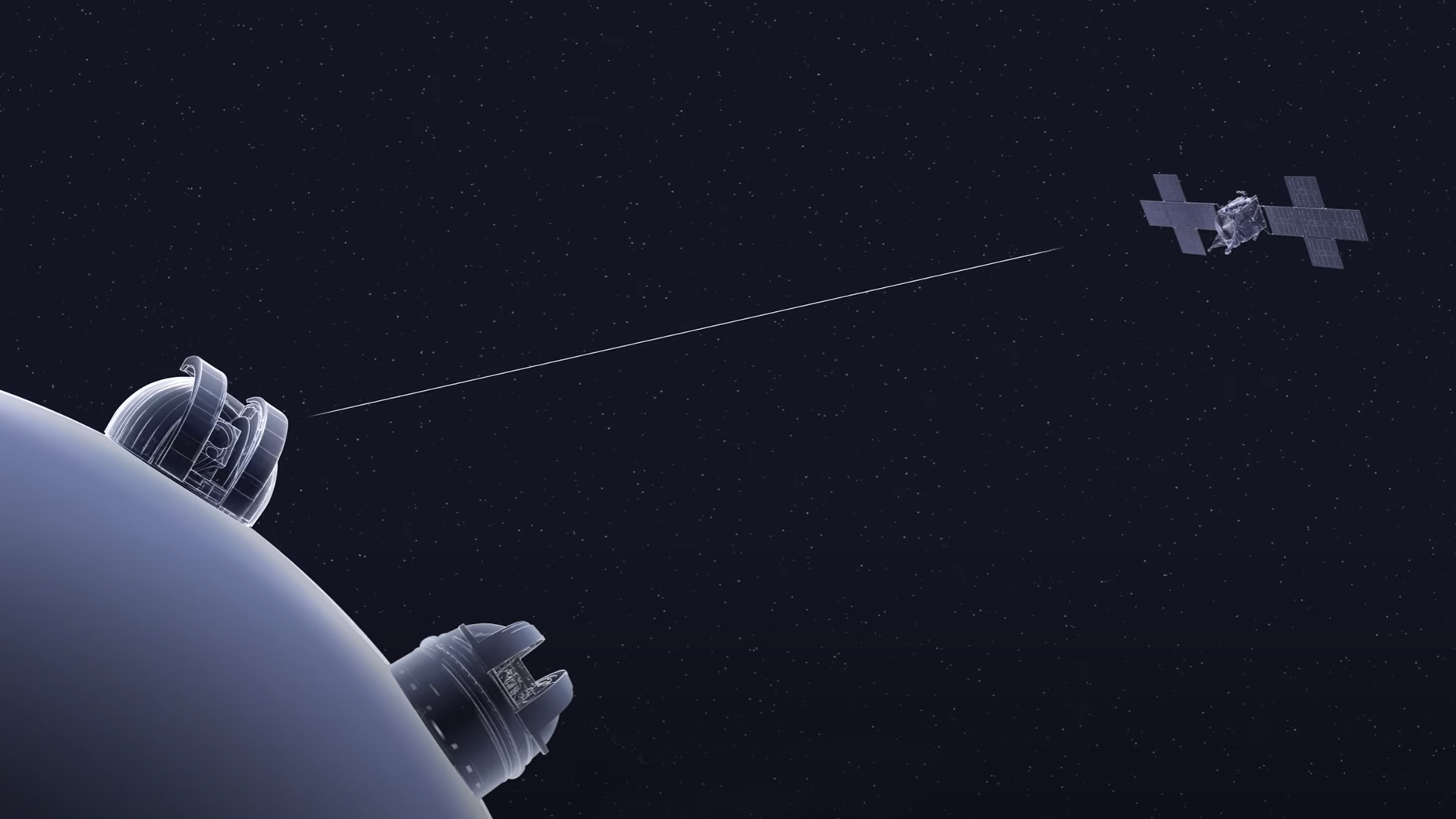Breaking New Ground with Deep Space Optical Communications
NASA has achieved a remarkable feat in the realm of space communication by completing significant milestones with its Deep Space Optical Communications (DSOC) technology demonstration. This pioneering project has successfully transmitted a laser signal to the Psyche spacecraft, located approximately 290 million miles (460 million kilometers) from Earth, a distance comparable to when Earth and Mars are at their farthest apart. This achievement marks a substantial step forward in the use of laser communication for space exploration, showcasing its potential to transform how we transmit data across the cosmos.
The Achievement
The DSOC technology demonstration, launched aboard NASA’s Psyche mission on October 13, 2023, has been a cornerstone in testing the capabilities of laser communication in deep space. On July 29, the project reached a significant milestone by sending a laser signal across a vast distance. This achievement not only highlights the precision required for laser communication but also validates the techniques used to track and point the laser accurately. Meera Srinivasan, the operations lead of the project at NASA’s Jet Propulsion Laboratory (JPL) in Southern California, emphasized the importance of this milestone, stating that it confirms the robustness and transformative potential of optical communications in space exploration.
How It Works
The DSOC experiment comprises a flight laser transceiver and two ground stations. The Hale Telescope at Caltech’s Palomar Observatory in San Diego County serves as the downlink station, receiving data from the transceiver in deep space. The Optical Communications Telescope Laboratory at JPL’s Table Mountain facility near Wrightwood, California, acts as the uplink station, capable of transmitting an impressive 7 kilowatts of laser power to the transceiver.
Laser communication offers a distinct advantage over traditional radio frequency systems by transmitting data at rates up to 100 times faster. This capability is crucial for sending complex scientific information, high-definition imagery, and video, which are essential for future missions involving astronauts traveling to Mars and beyond. The higher frequency of near-infrared light, used in laser communication, allows more data to be packed into each transmission, facilitating significantly faster data transfer rates.
The Psyche Spacecraft
The Psyche spacecraft itself remains in excellent condition, utilizing ion propulsion to journey toward a metal-rich asteroid in the main asteroid belt between Mars and Jupiter. Ion propulsion is a highly efficient method of propulsion that uses charged particles to generate thrust, allowing spacecraft to travel long distances with minimal fuel consumption.
As part of the DSOC technology demonstration, data is transmitted to and from the Psyche spacecraft as bits encoded in near-infrared light. This method enables the transmission of vast amounts of data at high speeds, even as the spacecraft moves farther from Earth. For instance, when Psyche was about 33 million miles (53 million kilometers) away, a distance similar to Mars’ closest approach to Earth, the system could transmit data at a maximum rate of 267 megabits per second, comparable to broadband internet speeds.
Data Transmission Achievements
On June 24, when Psyche was 240 million miles (390 million kilometers) from Earth, the project achieved a sustained downlink data rate of 6.25 megabits per second, with a peak rate of 8.3 megabits per second. While this rate is lower than the system’s maximum capability, it is significantly higher than what can be achieved with a radio frequency communications system of similar power over such a distance.
The primary goal of the DSOC project is to demonstrate the ability to transmit data at higher speeds than existing space communication technologies. In pursuit of this goal, the project has tested the transmission of unique data sets, including art, high-definition video, and engineering data from the Psyche spacecraft. For example, one downlink included digital versions of Arizona State University’s “Psyche Inspired” artwork, images of team members’ pets, and a 45-second ultra-high-definition video spoofing television test patterns from the past century.
Streaming Deep Space Video
On June 24, the DSOC technology demonstration successfully streamed the first ultra-high-definition video from deep space, featuring a cat named Taters, from the Psyche spacecraft back to Earth. This transmission occurred when Psyche was 240 million miles away. The video, along with other artwork and images, had been uploaded to Psyche and stored in its memory before launch.
Abi Biswas, the technology demonstration’s project technologist at JPL, noted that a key objective was to prove that data-rate reduction was proportional to the inverse square of the distance. This goal was met, with almost 11 terabits of data downlinked during the first phase of the demonstration.
Future Plans
The flight transceiver on Psyche is temporarily powered down but will be reactivated on November 4, 2023. This activity is intended to demonstrate that the flight hardware can operate for at least a year. Ken Andrews, the project flight operations lead at JPL, expressed anticipation for the transceiver operating at its full design capabilities during the post-conjunction phase later in the year.
This demonstration is part of a series of optical communication experiments funded by NASA’s Space Technology Mission Directorate’s Technology Demonstration Missions Program, managed at NASA’s Marshall Space Flight Center in Huntsville, Alabama. The agency’s Space Communications and Navigation (SCaN) program within the Space Operations Mission Directorate also supports this initiative. Several partners, including MIT Lincoln Laboratory, L3 Harris, CACI, First Mode, and Controlled Dynamics Inc., have contributed to the development of the flight laser transceiver. In addition, Fibertek, Coherent, Caltech Optical Observatories, and Dotfast support the ground systems. Some of the technology has been developed through NASA’s Small Business Innovation Research program.
Conclusion
The successful transmission of data over such vast distances underscores the potential of laser communication to revolutionize space exploration. By enabling significantly higher data transfer rates, this technology promises to enhance our ability to conduct complex scientific investigations and support human missions to distant planets. The DSOC project represents a significant step forward in this exciting field, with implications for the future of interplanetary communication.
For more detailed information, you can visit the official DSOC mission page.
For more Information, Refer to this article.


































